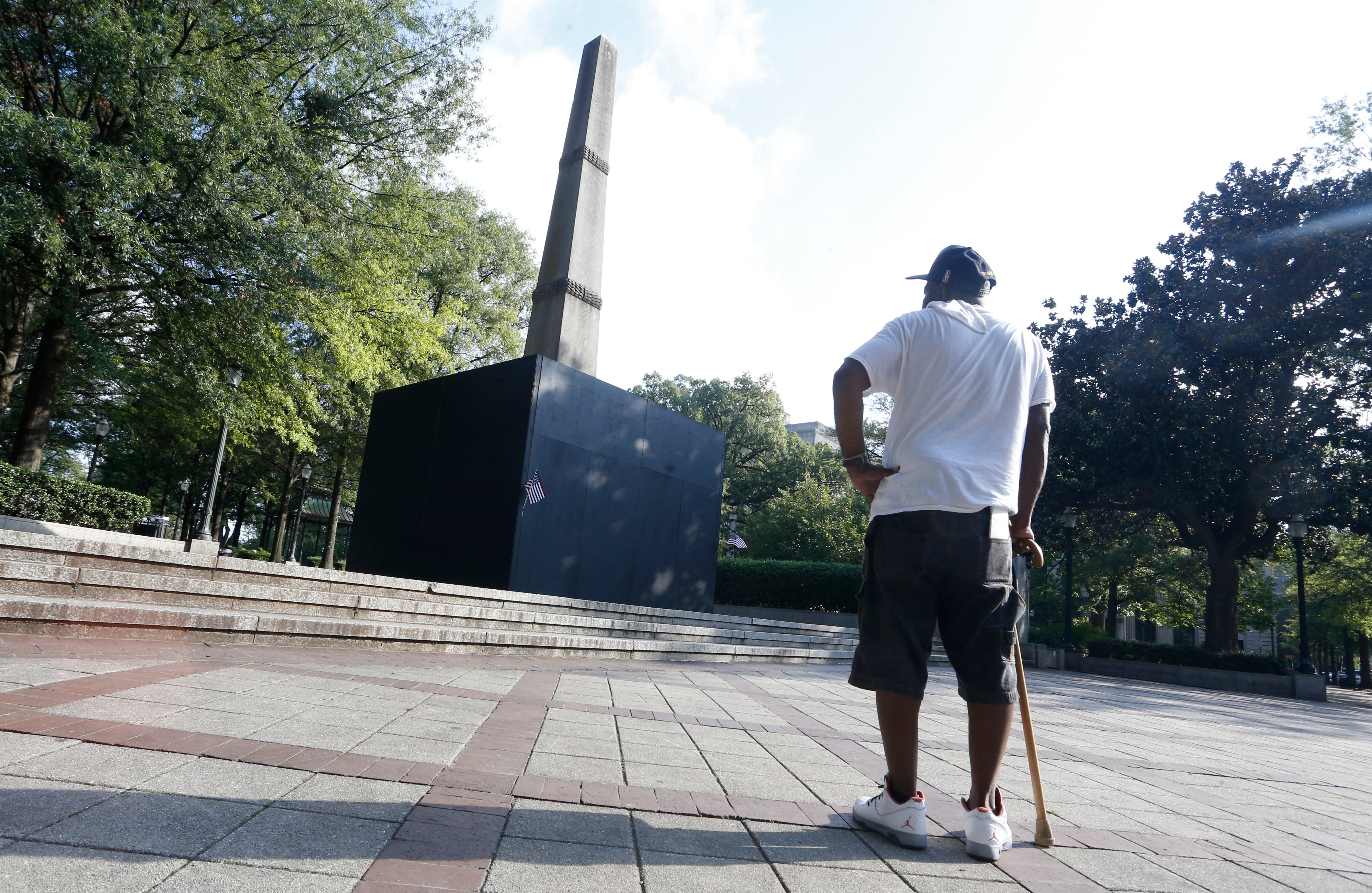
Art history doesn’t usually have much to offer in the way of practical, directly actionable lessons. But Sarah Parcak, a renowned professor of Egyptology at the University of Alabama at Birmingham, recently plumbed humanity’s cultural past to offer some very concrete advice. On Sunday, she posted detailed, step-by-step instructions on Twitter (including a helpful diagram) for how to tear down an obelisk, culled from her research into ancient Egypt. (For every 10 feet of monument, you need 40 or more people; use rope attached to a chain; everyone should wear gloves; pull hard in unison from either side.)
After she shared the sketch, she added, “There might be one just like this in downtown Birmingham! What a coincidence. Can someone please show this thread to the folks there.”
Demonstrators seem to have gotten the message. That night, crowds protesting police brutality following the murder of George Floyd tried to tear down the 52-foot-tall obelisk, known as the Confederate Soldiers and Sailors Monument, in Birmingham’s Linn Park. Standing among the group with a megaphone, the city’s mayor, Randall Woodfin, said, “Allow me to finish the job for you.”
The following evening, on Monday, Woodfin called in workers to remove the five-story monument, piece by piece. (The city also implemented a state of emergency, putting in place a curfew and arresting at least two dozen people, according to NPR.) As of early Tuesday morning, little remained of the monument.
Parcak’s tweet inflamed right-wing Twitter, and was even misunderstood by a number of conservative voices as advocating for the destruction of another well-known obelisk: the Washington Monument.
The Confederate Soldiers and Sailors Monument is one of many confederate statues that have become sites of struggle as protests rage across the nation. Among the many monuments to America’s racist history that were vandalized, destroyed, or taken down, Alexandria’s statue of a Confederate soldier—which has stood at the same intersection since 1889—was removed on Monday, a month earlier than scheduled, due to the protests, Washingtonian reports.
In Birmingham, the obelisk in question had long been the subject of debate. Its foundation was laid in 1894 at a Confederate veterans reunion, and dedicated in 1905 by the United Daughters of the Confederacy. Amid the 2017 wave of protests against Confederate memorials, the city’s previous mayor ordered the memorial to be surrounded by plywood barriers to keep it from public view.
But the state’s attorney general sued the city over the move, arguing it violated the new Alabama Memorial Preservation Act, which protects against the relocation or alteration of confederate symbols that are more than 40 years old. Last fall, the state supreme court sided with the attorney general and the monument’s supporters, ordering the city to remove the plywood and pay a fine of $25,000.
The attorney general has threatened the city with yet another lawsuit ahead of the statue’s removal this week. “Should the City of Birmingham proceed with the removal of the monument in question, based upon multiple conversations I have had today,” the attorney general said in a statement on Monday, he noted that he was prepared to “pursue a new civil complaint against the City.”
But Mayor Woodfin was unmoved. “In order to prevent more civil unrest, it is very imperative that we remove this statue in Linn Park. That has a cost to it,’’ Woodfin said, according to AL.com. “I understand the AG’s office can bring a civil suit against the city and if there’s a judgement rendered from a judge, then we should be held accountable and I am willing to accept that because that is a lower cost than civil unrest in our city.”